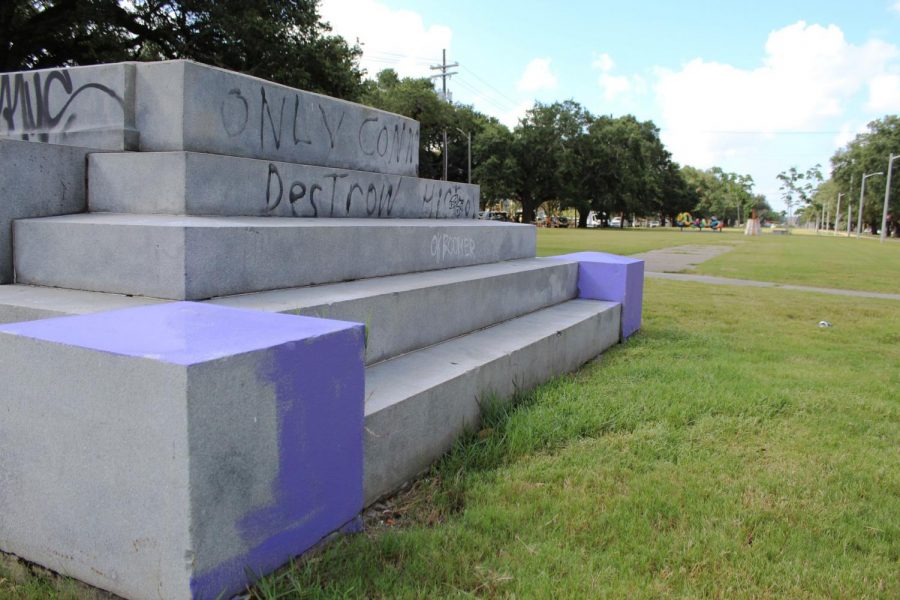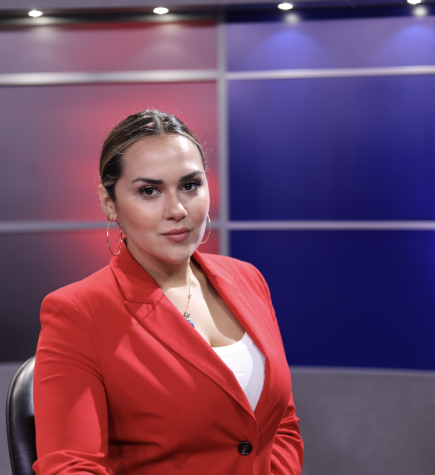Opinion: Louisiana education needs to step up
Graffiti covers the foundation that formerly held the Jefferson Davis Monument on Jeff Davis Parkway in New Orleans. The monument was removed in 2017 following protests. Photo credit: Alexandria Whitten
September 25, 2020
I couldn’t have been more than six years old when I was coloring in the classroom in elementary school and a friend asked me if I’d hand him the “skin color.” Struggling with the idea that I didn’t look exactly like everyone else and the fact that I never got sunburnt in the summertime, led to me mixing “skin color,” which Crayola calls peach, and brown when I colored my face in my self-portrait. All of the kids in my class looked at my work like I had some sort of skin disease.
This struggle, however, was never my fault, and it was never my classmates fault, either. It wasn’t even my educators’ faults as they followed standard education protocol in my predominantly white school. I blame the state of Louisiana and school administrators for not thinking of little girls like me and a lot of my friends growing up. My best friend, whose parents were Iraqi, was called a terrorist since the second grade, for example. While kids should know that that’s wrong, we were all born after September 11, 2001, and we deserved better.
This frustration, however, is recent. I didn’t get proper diversity training, consent talk, or sexual education, until Wolf Pack Welcome before my first week of college. I didn’t learn what contraception was until my sophomore year in high school, and I didn’t know Ruby Bridges by name until my junior year. It’s embarrassing to admit my academic shortcomings because I owe my city and my community more, but in my eyes, I was a child, and the systems I grew up in failed me. I could tell you about all U.S. presidents in high school. I could calculate any derivative for any expression you gave me. I could recite poems and carry on a conversation with you in three languages, but I couldn’t tell you about Tamir Rice, Philando Castile, Michael Brown, Walter Scott, or Alton Sterling until less than a year ago. That is a shame, and school administrators should be doing everything in their power to change that.
It won’t happen overnight. Schools like the ones I grew up in are businesses and in southern Louisiana there’s an audience to appease, but it’s been time to grow beyond “not seeing color.” Listen to, look at, and treasure the children in front of you regardless of who they are, but notice their presence and respect their color and history. You have spent too many years colorblind, tongue-in-cheek as the one Black girl in school wore braids or Bantu knots. It’s your job to put an end to this hate. Hate is learned and learning about what happens to Black lives in America in the classroom from the beginning will save today’s world from one less racist heart tomorrow. It is the difference between looking at the same violent stories on the news years from now to celebrating unity and solidarity between children who once couldn’t share the same facilities.








